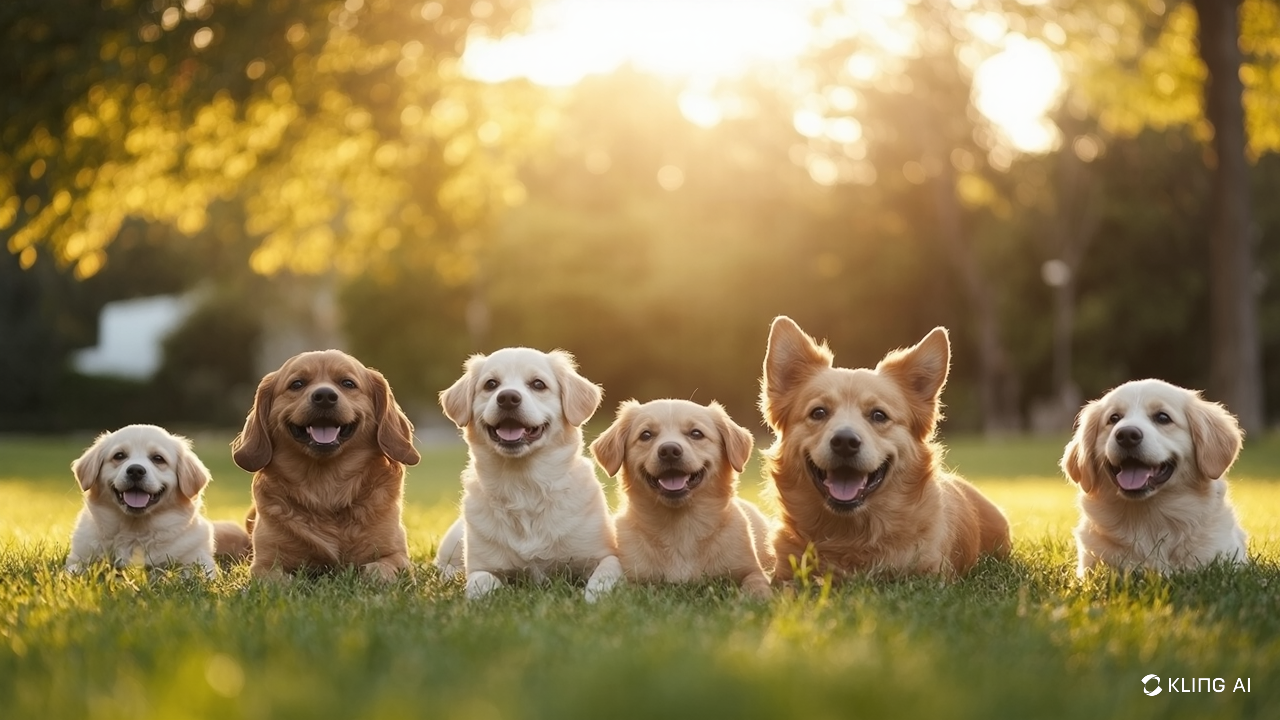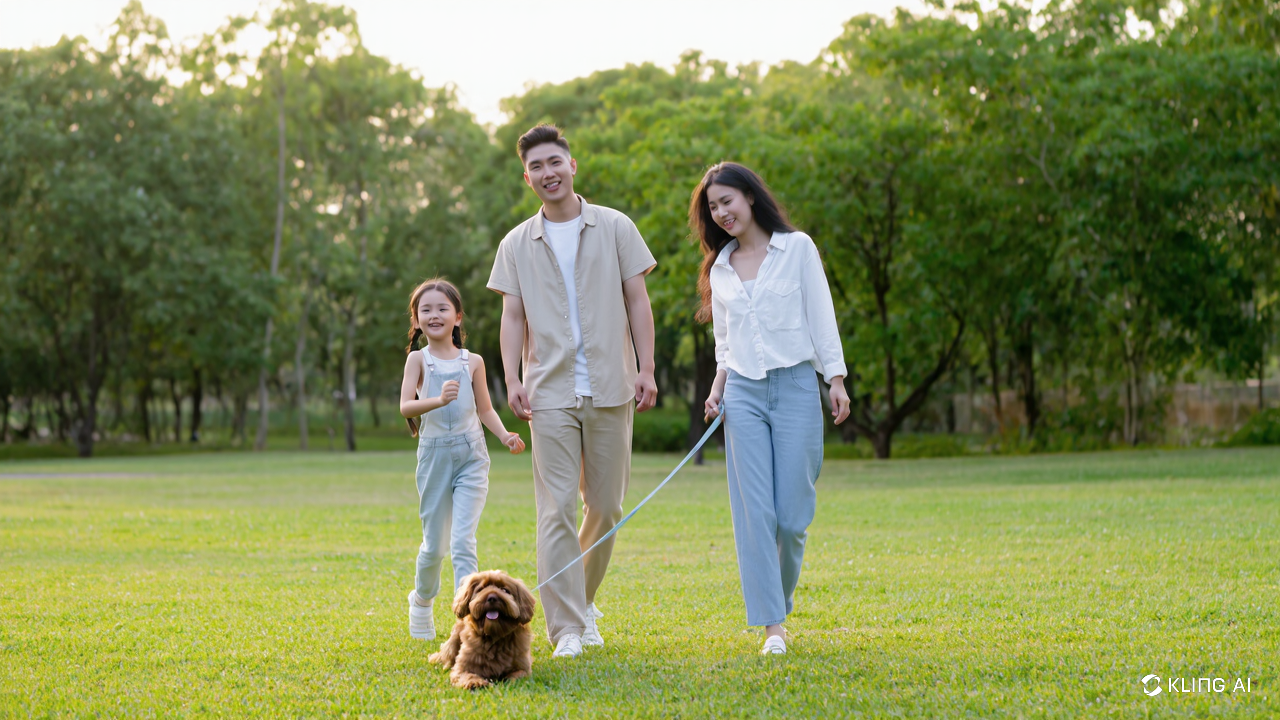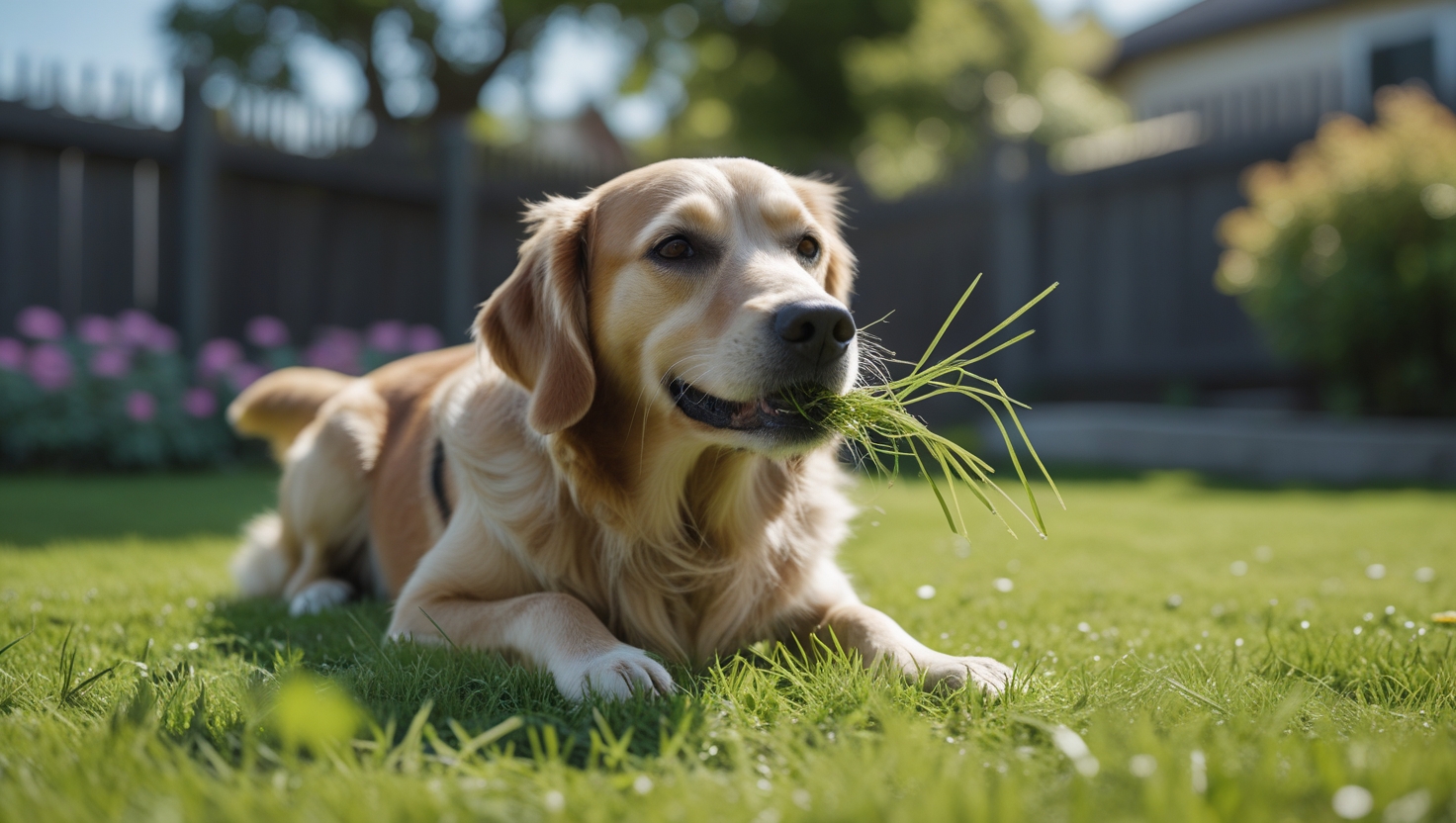
When we discuss "dangerous" dog breeds, we're entering controversial territory filled with misconceptions, strong opinions, and sometimes unfair stereotypes. While certain breeds may appear more frequently in bite statistics, understanding what truly makes a dog dangerous requires looking beyond breed labels to examine the complex interplay of genetics, training, and environment.
Dogs have been our companions for thousands of years, selectively bred for specific purposes ranging from hunting and herding to protection and companionship. This selective breeding has created distinct behavioral tendencies in different breeds. However, a dog's individual temperament, training history, and living conditions play equally important roles in determining whether it becomes a well-adjusted pet or poses a risk to humans and other animals.
Some breeds have developed reputations for aggression based on statistics, media coverage, and their physical capabilities. These reputations can be partially justified but are often exaggerated or misunderstood. To truly understand canine aggression and the concept of "dangerous" breeds, we need to examine multiple factors rather than simply categorizing dogs based on breed alone.
Canine aggression doesn't develop in a vacuum. Several interrelated factors determine whether a dog becomes aggressive:
1. Genetic Predisposition: Some breeds were historically selected for protective, territorial, or fighting abilities, which can influence their behavioral tendencies.
2. Early Socialization: Dogs that aren't properly socialized during critical developmental periods (typically between 3-14 weeks) may develop fear-based aggression toward unfamiliar people, animals, or situations.
3. Training and Handling: Improper training methods, especially those using punishment or confrontation, can increase aggression. Conversely, positive reinforcement training can help mitigate aggressive tendencies.
4. Owner Experience: Novice dog owners may unintentionally reinforce unwanted behaviors or fail to establish appropriate boundaries.
5. Health and Pain: Dogs suffering from pain or certain medical conditions may become irritable and more likely to bite.
6. Past Traumatic Experiences: Dogs that have been abused, neglected, or experienced trauma may develop defensive aggression.
Not all intimidating behavior indicates a dangerous dog. Many breeds were developed to be protective, which is different from unprovoked aggression:
Understanding this distinction is crucial for properly assessing a dog's behavior and addressing potential issues before they become dangerous.
A dog's physical attributes significantly influence the potential damage it can cause if it does bite:
A small dog with aggression issues might not make headlines, while the same behavior in a larger, stronger breed can result in serious injury or even death. This physical capability, rather than greater aggression, often explains why certain breeds appear more frequently in severe bite statistics.
The term "Pit Bull" actually encompasses several breeds, including the American Pit Bull Terrier, American Staffordshire Terrier, and Staffordshire Bull Terrier. These dogs descended from bulldogs and terriers bred in 19th-century England for bull-baiting and later dog fighting.
When these blood sports were outlawed, Pit Bulls came to America where they became valued as all-purpose farm dogs, hunting companions, and family pets. Their loyalty, athleticism, and determination made them popular working dogs, though some were unfortunately still used in illegal dog fighting operations.
Pit Bulls are frequently cited in bite statistics and media reports for several reasons:
1. Popularity: Pit Bull-type dogs are numerous in the United States, increasing their statistical representation in bite incidents.
2. Misidentification: Studies show that even animal professionals frequently misidentify breeds, particularly mixed-breed dogs with certain physical characteristics.
3. Attractiveness to Irresponsible Owners: Their strong appearance and protection abilities sometimes attract owners who want a "tough" dog and may encourage aggressive behavior.
4. Strength and Determination: When Pit Bulls do bite, their physical strength and tendency to hold on can result in more severe injuries than bites from smaller breeds.
5. Media Coverage: Attacks involving Pit Bulls receive disproportionate media attention, creating confirmation bias.
The scientific community remains divided on whether Pit Bulls are inherently more aggressive than other breeds. Research provides mixed findings:
What's clear is that well-socialized, properly trained Pit Bulls often make loving, loyal family pets. Many experts argue that irresponsible breeding and ownership are far bigger factors in aggression than breed alone.
Rottweilers consistently rank second in fatal dog attack statistics in the United States. Their powerful build (typically 80-135 pounds), imposing presence, and bite force estimated at over 300 PSI make them physically capable of inflicting serious damage.
Originally bred as cattle drivers and protectors of livestock, Rottweilers have a natural guarding instinct and territorial nature. This protective tendency, combined with their strength, contributes to their reputation as potentially dangerous dogs.
Rottweilers form strong bonds with their families and naturally act as guardians. When properly channeled, this protective instinct makes them excellent guard dogs. However, without proper socialization and training, these same instincts can manifest as dangerous aggression toward perceived threats—which may include innocent visitors, delivery personnel, or even family friends.
A Rottweiler that hasn't learned appropriate social behavior may react aggressively out of fear or uncertainty, rather than legitimate protection needs.
Responsible Rottweiler ownership requires:
1. Early and ongoing socialization: Exposing puppies to various people, animals, environments, and situations in a positive manner.
2. Consistent, positive training: Using reward-based methods to teach boundaries and appropriate behavior.
3. Mental stimulation: Providing sufficient exercise and mental challenges to prevent frustration-based behaviors.
4. Clear leadership: Establishing clear rules and expectations without using harsh methods that could trigger defensive aggression.
When raised with proper care, Rottweilers can be confident, stable, and discerning guardians who pose little risk to the public.
The Doberman Pinscher was developed in the late 19th century by German tax collector Karl Friedrich Louis Dobermann, who wanted a medium-sized protection dog to accompany him on his rounds. The breed was later refined as a military and police dog, known for intelligence, loyalty, and trainability.
Their sleek appearance, speed, and alertness made them ideal for protection work. During World War II, Dobermans served as messenger dogs, sentries, and rescuers of wounded soldiers, cementing their reputation as working protection dogs.
Dobermans possess several traits that, without proper guidance, can contribute to aggressive tendencies:
1. High intelligence: They quickly learn behaviors—both desired and undesired.
2. Strong prey drive: The instinct to chase moving objects can transfer to smaller animals or running children if not properly managed.
3. Protective instinct: Their natural guardian tendencies require clear guidance about what constitutes a genuine threat.
4. Energy level: Underexercised Dobermans may channel their energy into destructive or aggressive behaviors.
Successful Doberman ownership relies on:
1. Early socialization: Introducing puppies to diverse experiences in a positive, controlled manner.
2. Consistent boundaries: Establishing clear rules and enforcing them gently but firmly.
3. Mental stimulation: Providing puzzle toys, training exercises, and varied activities to engage their intelligent minds.
4. Physical exercise: Ensuring they receive adequate daily exercise to prevent frustration.
5. Positive reinforcement: Using rewards to encourage desired behaviors rather than punishment for unwanted ones.
With proper training and socialization, Dobermans typically become deeply loyal, affectionate family members who can distinguish between genuine threats and normal situations.
German Shepherds have been prized working dogs since their development in the late 19th century. Their combination of intelligence, trainability, physical capability, and work drive makes them exceptionally versatile. These qualities have made them the preferred breed for:
Their ability to form strong handler bonds, coupled with their natural protective instincts, makes them highly effective in roles requiring both independent decision-making and handler loyalty.
German Shepherds possess strong territorial and protective instincts. While these traits make them excellent guardians, they can also lead to problematic behavior:
1. Territorial aggression: Protecting their home and family from perceived threats
2. Fear-based aggression: Particularly in poorly bred or under-socialized individuals
3. Herding behavior: Nipping or chasing movement, which can be misinterpreted as aggression
Their size (typically 50-90 pounds) and powerful bite (238 PSI) mean that when aggression does occur, injuries can be serious.
Proper development of a German Shepherd requires:
1. Extensive socialization: Exposure to different people, animals, environments, and situations during the critical developmental window (3-16 weeks)
2. Consistent training: Using clear, reward-based methods that build confidence rather than fear
3. Mental stimulation: Providing problem-solving opportunities to channel their intelligence
4. Physical exercise: Ensuring sufficient daily activity to prevent frustration-based behaviors
5. Responsible breeding: Selecting breeding stock for stable temperament, not just appearance
When these needs are met, German Shepherds typically display excellent discrimination between genuine threats and normal social situations, making them both safe family companions and effective working dogs.
Despite their teddy bear-like appearance, Chow Chows have several traits that contribute to their reputation for aggression:
1. Ancient lineage: As one of the oldest dog breeds, dating back over 2,000 years, Chows retain primitive traits including strong territorial instincts.
2. Historical roles: They were used in China for hunting, herding, protection, and sometimes as war dogs, all functions requiring independence and assertiveness.
3. Natural reserve: Chows typically bond strongly with their immediate family but remain aloof or suspicious of strangers.
Their combination of strength (45-70 pounds), powerful jaws, and natural suspicion of outsiders places them among breeds requiring careful handling.
Unlike many breeds bred specifically for friendliness toward humans, Chow Chows are naturally reserved with people outside their family circle. This manifests as:
1. Stranger wariness: Reluctance to accept handling from unfamiliar people
2. Territorial behavior: Strong protection of home and property
3. Limited tolerance: Less patience for rough handling or invasive behaviors
Their natural expression—created by their distinctive wrinkled brow and small, deep-set eyes—can make it difficult to read their mood, sometimes leading to missed warning signs before an aggressive response.
Successful Chow Chow ownership requires:
1. Early socialization: Introducing puppies to diverse people, animals, and situations under positive conditions
2. Consistent training: Establishing clear boundaries using positive methods
3. Respect for their nature: Understanding that Chows will never be extremely outgoing dogs
4. Supervision with children and strangers: Monitoring interactions to prevent misunderstandings
5. Owner education: Learning to recognize subtle signs of discomfort before they escalate
When managed with understanding of their natural tendencies, Chow Chows can be dignified, loyal companions who pose minimal risk to their families while maintaining appropriate caution with strangers.
Wolf hybrids (crosses between wolves and domestic dogs) present unique challenges that can make them potentially dangerous pets:
1. Conflicting instincts: Wolf hybrids possess both wolf instincts (caution, independence, territorial behavior) and dog traits in unpredictable combinations.
2. Social structure confusion: Wolves have complex pack hierarchies that differ from dog-human relationships, creating confusion about appropriate behavior.
3. Predatory drive: Higher predatory instincts than most domestic dogs, which can be triggered by small animals, running children, or other stimuli.
4. Physical capabilities: The strength, intelligence, and jaw power of wild animals combined with varying degrees of domestication.
Unlike dogs, which have evolved over thousands of years to live cooperatively with humans, wolves are wild animals whose instincts are not aligned with pet ownership.
Due to safety concerns, wolf hybrids face significant legal restrictions:
1. Complete bans: Many states and municipalities prohibit ownership entirely
2. Special permits: Some areas require special licensing, insurance, and containment facilities
3. Classification as wild animals: In some jurisdictions, wolf hybrids are legally classified as wildlife rather than domestic animals
4. Rabies vaccine issues: Standard rabies vaccines are not approved for wolf hybrids, creating public health concerns
These restrictions reflect the genuine safety concerns surrounding these animals as pets.
Wolf hybrid owners face exceptional challenges:
1. Limited trainability: Wolf hybrids typically show less responsiveness to human commands and are less motivated by traditional rewards
2. Powerful escape instincts: They often display extraordinary determination to escape confinement
3. Fear responses: Many show heightened fear responses to novel situations, which can trigger aggressive behavior
4. Resource guarding: Strong protection of food, toys, and space
5. Maturation changes: Often show significant behavioral changes upon reaching sexual maturity (1-2 years), sometimes becoming more aggressive or territorial
Even experienced dog trainers often find wolf hybrids exceptionally challenging, and many animal welfare organizations strongly discourage keeping them as pets.
The Dogo Argentino was developed in Argentina during the 1920s by Dr. Antonio Nores Martinez specifically for big-game hunting, particularly wild boar and puma. This specialized breeding created a dog with:
1. Extreme physical power: Muscular, athletic build (80-100 pounds) designed for tackling large prey
2. High pain tolerance: Ability to continue fighting despite injury
3. Strong prey drive: Intense instinct to chase and capture running animals
4. Pack hunting ability: Designed to work cooperatively with other dogs while hunting
These traits made them exceptionally effective hunters but require careful management in a companion animal.
Beyond their hunting abilities, Dogos typically display:
1. Strong protective instincts: Natural guarding tendencies toward family and property
2. Dog aggression: Potential for aggression toward unfamiliar dogs, particularly of the same sex
3. Dominance tendencies: Natural inclination to establish and maintain social rank
4. High exercise needs: Significant physical energy requiring appropriate outlets
Their combination of strength, protective nature, and hunting background places them among breeds requiring experienced handling.
Successful Dogo Argentino ownership requires:
1. Early socialization: Extensive exposure to different people, animals, and environments during developmental periods
2. Consistent training: Clear boundaries established through positive, reward-based methods
3. Proper exercise: Daily vigorous physical activity to prevent frustration
4. Mental stimulation: Activities that engage their intelligent minds
5. Careful supervision: Managing interactions with strangers, children, and other animals
With appropriate ownership, Dogo Argentinos can be loyal, affectionate family companions, but their power and instincts make them unsuitable for novice dog owners.
The Cane Corso's lineage traces back to ancient Roman war dogs, later refined in Italy as a property guardian, hunter of large game, and farm worker. This heritage created a breed with:
1. Imposing size: Typically 90-120 pounds with a muscular, athletic build
2. Natural protective instinct: Strong guarding tendencies toward family and property
3. Intelligence and discernment: Ability to assess threats and respond appropriately
4. Working drive: Natural inclination toward tasks and activity
Their historical function as both protectors and hunters influences their behavior and temperament as modern companions.
Their Strength and Dominance Over Other Animals
The Cane Corso possesses physical and temperamental traits that demand respect:
1. Exceptional strength: Powerful musculature and substantial bite force
2. Natural dominance: Tendency to establish and maintain social position
3. Territorial behavior: Strong protection of home territory
4. Prey drive: Potential for chasing and capturing smaller animals
5. Same-sex aggression: Particularly in intact males, potential for conflict with other male dogs
These characteristics make them excellent guardians but require careful management to ensure they don't become problematic.
Successful Cane Corso ownership depends on:
1. Clear leadership: Establishing consistent, fair boundaries without harsh methods
2. Early socialization: Exposing puppies to various people, animals, and situations under positive conditions
3. Ongoing training: Continuing education throughout the dog's life using reward-based methods
4. Physical exercise: Providing appropriate daily activity to prevent frustration
5. Mental stimulation: Engaging their intelligent minds with problem-solving and training
When raised with appropriate guidance, Cane Corsos typically develop excellent discrimination between genuine threats and normal situations, becoming stable, reliable guardians and companions.
The Tosa Inu was developed in Japan's Tosa region (now Kochi Prefecture) specifically for organized dog fighting, which remains legal in Japan though heavily regulated. Their development involved crossing native Japanese fighting dogs with imported breeds including Mastiffs, Great Danes, Bulldogs, and Bull Terriers to create:
1. Extreme size: Typically 100-200 pounds, substantially larger than most fighting breeds
2. Remarkable pain tolerance: Ability to continue fighting despite injury
3. Controlled aggression: Specifically bred for aggression toward other dogs while maintaining handler safety
4. Silent fighting style: Unlike many fighting breeds, Tosas were selected to fight quietly
This specialized breeding history created a dog with exceptional fighting abilities but questionable suitability as a companion animal.
The Tosa Inu faces widespread restrictions worldwide:
1. Complete bans: Prohibited in the United Kingdom, Australia, New Zealand, Norway, Denmark, and several other countries
2. Restricted ownership: Special permits, insurance requirements, and containment standards in many jurisdictions
3. Import restrictions: Limitations on breeding and transportation across borders
These restrictions stem from the breed's fighting heritage, power, and potential risk to public safety when inappropriately managed.
Tosa Inu ownership presents exceptional challenges:
1. Dog aggression management: Their fighting heritage creates strong dog-directed aggression requiring constant vigilance
2. Socialization requirements: Extensive early exposure to different people and situations is essential
3. Physical containment needs: Secure fencing and control measures to prevent conflicts with other animals
4. Legal considerations: Understanding and complying with local restrictions
5. Specialized training knowledge: Requires deep understanding of dog behavior and positive training methods
Due to these challenges, most experts consider the Tosa Inu suitable only for the most experienced dog owners who understand the breed's history and needs.
Many canine behavior experts argue that labeling entire breeds as "dangerous" oversimplifies a complex issue:
1. Individual variation: Significant temperament differences exist between individuals within any breed
2. Multiple causation: Most dog bites result from a combination of factors rather than breed alone
3. Statistical context: When adjusted for population size, some "dangerous" breeds show lower bite rates than more popular "family" breeds
4. Bite severity vs. frequency: Larger dogs cause more damage when they bite, creating reporting bias
5. Misidentification issues: Studies show that visual breed identification, especially of mixed-breed dogs, is highly unreliable
These factors suggest that focusing solely on breed provides an incomplete and potentially misleading picture of canine aggression risk.
Ownership practices significantly influence canine behavior:
1. Selection factors: People seeking aggressive dogs often choose certain breeds and then encourage problematic behaviors
2. Training methods: Harsh, punitive training can increase fear and aggression in any breed
3. Containment failures: Inadequate fencing or supervision allowing dogs to roam unsupervised
4. Lack of socialization: Failing to expose puppies to diverse people, animals, and situations during critical developmental periods
5. Neglect of warning signs: Ignoring early indicators of problematic behavior before they escalate
Research consistently shows that owner behavior and home environment are stronger predictors of aggression than breed alone.
Evidence supports the effectiveness of appropriate training and management:
1. Early intervention: Addressing concerning behaviors when first observed
2. Positive reinforcement: Using reward-based methods rather than punishment
3. Appropriate socialization: Controlled exposure to diverse situations
4. Meeting physical and mental needs: Providing adequate exercise and stimulation
5. Understanding breed tendencies: Working with, rather than against, natural traits
While no dog can be guaranteed 100% safe, appropriate ownership practices significantly reduce risk across all breeds.
Proactive prevention is essential for breeds with higher physical capabilities or stronger guarding tendencies:
1. Puppy socialization classes: Structured exposure to other dogs and people under professional guidance
2. Positive exposure: Creating pleasant associations with diverse people, animals, sounds, and environments
3. Impulse control training: Teaching patience, delayed gratification, and emotional regulation
4. Consistent boundaries: Establishing clear, fair rules without harsh methods
5. Professional guidance: Working with qualified trainers who use positive, science-based methods
Starting these practices early—ideally between 8-16 weeks of age—can shape the development of a stable, confident adult dog.
Understanding canine body language allows intervention before a bite occurs:
1. Stiffening posture: Becoming rigid or freezing
2. Hard staring: Fixed, intense eye contact
3. Resource guarding: Protecting food, toys, people, or spaces
4. Growling or snarling: Vocalizations indicating discomfort
5. Raised hackles: Hair standing up along the back and neck
6. Displacement behaviors: Excessive yawning, lip-licking, or avoidance in stressful situations
Recognizing these signals allows owners to remove the dog from triggering situations and address underlying issues before they escalate.
Safe ownership of any breed, particularly powerful ones, requires:
1. Appropriate containment: Secure fencing, proper leash control, and supervision
2. Ongoing education: Learning about canine behavior and training techniques
3. Regular veterinary care: Addressing medical issues that might contribute to irritability
4. Spaying/neutering consideration: Discussing with veterinarians whether this might reduce certain aggressive tendencies
5. Realistic assessment: Honestly evaluating whether a particular breed matches the owner's experience level and lifestyle
These practices significantly reduce the risk of incidents involving any breed.
Breed-specific legislation (BSL) restricts or bans ownership of certain breeds, but research on its effectiveness shows mixed results:
1. Limited evidence of effectiveness: Studies in regions with BSL show inconsistent impacts on bite statistics
2. Enforcement challenges: Difficulty in accurately identifying breeds, particularly mixed breeds
3. Resource allocation issues: Focusing on breed identification rather than dangerous behavior
4. Underground ownership: Driving ownership of restricted breeds into unregulated channels
5. Failure to address root causes: Not addressing irresponsible ownership practices
Many animal welfare organizations and veterinary associations oppose BSL, advocating instead for breed-neutral dangerous dog laws.
The focus of effective regulation remains contentious:
Arguments for breed-based regulation:
Arguments for behavior/owner-based regulation:
This debate continues in communities worldwide as they seek effective public safety measures.
The ethics of breed restrictions involve complex considerations:
1. Public safety: Balancing community protection with individual rights
2. Animal welfare: Considering the impact of restrictions on dogs already in homes
3. Scientific validity: Examining whether restrictions are based on evidence or perception
4. Proportionality: Assessing whether broad bans represent a proportional response to risk
5. Alternative approaches: Considering whether less restrictive measures might achieve similar safety goals
These ethical questions have no simple answers and require thoughtful community dialogue.
The evidence consistently shows that multiple factors beyond breed influence canine behavior:
1. Early socialization: Experiences during critical developmental periods shape adult behavior
2. Training methods: Positive versus punitive approaches significantly impact aggression risk
3. Owner behavior: How humans interact with dogs influences their responses
4. Living conditions: Exercise, mental stimulation, and appropriate care affect behavior
5. Individual temperament: Variation exists within any breed based on genetics and experience
While breed tendencies provide a starting framework, they represent only one factor among many that determine a dog's behavior.
Ultimately, preventing dog aggression requires owner commitment:
1. Appropriate breed selection: Choosing a dog whose characteristics match the owner's experience and lifestyle
2. Proper socialization: Providing positive exposure to diverse situations
3. Consistent training: Using clear, reward-based methods
4. Meeting physical and mental needs: Ensuring adequate exercise and stimulation
5. Management and supervision: Preventing situations that might trigger aggression
These owner responsibilities apply across all breeds, though they become particularly crucial for dogs with greater physical capabilities.
Moving forward, effective approaches to canine aggression should focus on:
1. Education: Teaching owners about dog behavior, body language, and appropriate training
2. Accessible resources: Providing affordable training, behavior help, and veterinary care
3. Objective assessment: Evaluating individual dogs based on behavior rather than appearance
4. Responsible breeding: Selecting breeding stock for stable temperament as well as physical traits
5. Comprehensive legislation: Developing laws that address dangerous behavior regardless of breed
By focusing on these evidence-based approaches rather than breed stereotypes, we can more effectively reduce dog bite incidents while treating dogs as individuals rather than categories.
Understanding the complex factors behind canine aggression allows us to move beyond simplistic breed labels to create safer communities through responsible ownership, appropriate training, and individualized assessment of each dog's behavior.
This article is for informational purposes only and does not constitute professional advice. Always consult with a veterinarian, certified dog trainer, or animal behaviorist for issues related to canine aggression.
________________________________________About the Author: This article was written by an expert with over two decades of experience in canine behavior, training, and breed-specific risk assessment. The author has worked extensively with shelters, rescue organizations, and individual owners to address and prevent aggressive behavior across all breeds.
________________________________________

Discover the best small dog breeds for families, apartments, seniors, and more! Learn about their temperament, trainability, grooming needs, and health considerations to find your perfect furry companion. Explore hypoallergenic, low-maintenance, and cuddly small dogs today!
Read more...

Find the best family dog breeds for your home! Discover small, medium, and large dogs that are friendly, trainable, and great with kids. Learn about hypoallergenic, low-maintenance, and protective breeds to match your family's lifestyle. Choose the perfect family companion today!
Read more...

Wondering why your dog eats grass? Discover the possible reasons behind this common behavior, from instinct to digestive relief. Learn when grass-eating is normal, potential health risks, and how to manage it safely. Find out if your dog needs veterinary attention today!
Read more...
Do you need a website design similar to this one, or maybe have your own idea in mind?
Feel free to use the Email below to get a free quote TODAY!
digigrow.to@gmail.com
All rights reserved 2024 - 2025.
Designed by DigiGrow